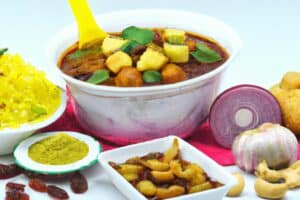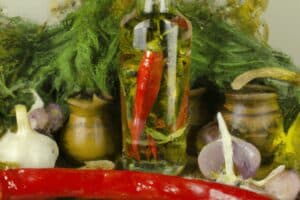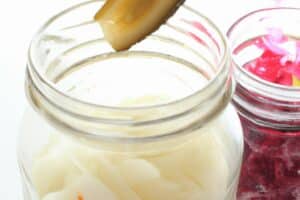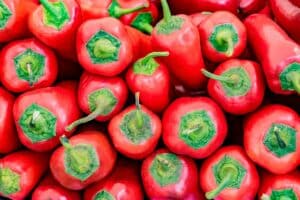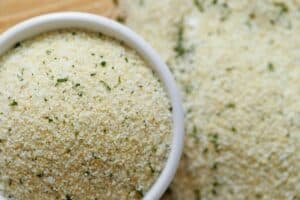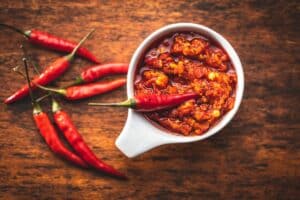Ginger paste is a tasty addition to many dishes, from spicy curries to party dips to zesty cocktails. The flavor of ginger adds a pungent, spicy taste to many dishes that can be disappointing without these flavors. If you realize at the last moment your jar of ginger paste is empty, there is no need to panic.
This article lists the five best ginger paste substitutes, so you can still whip up a satisfying, flavorful dish or drink.
There are more options to use a ginger garlic paste replacement, but this list explains the best options and the right time to use them.
You don’t have to bail on your beloved dish because you lack ginger paste as long as you have some of these ingredients on hand.
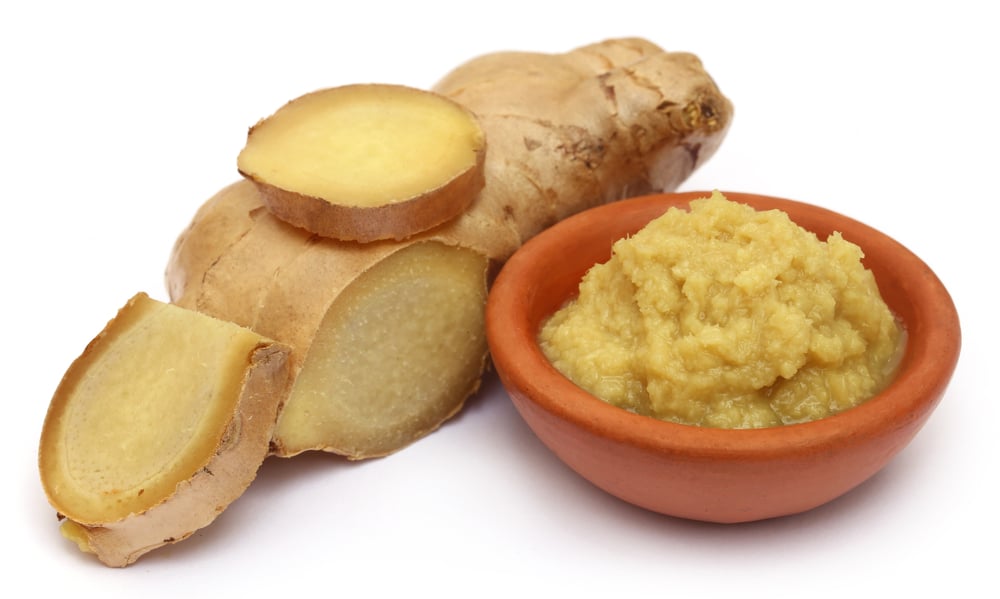
Top 5 Ginger Paste Alternatives
Ginger paste seems like a unique ingredient that can’t be used interchangeably with other condiments or spices, but there are several alternatives that can work great, depending on what you’re cooking. Some of these replacements perform best in savory recipes, while others are better off in baked goods or other desserts. Read the descriptions below to find out which option to go for the next time you cook.
1. Citrus Zest
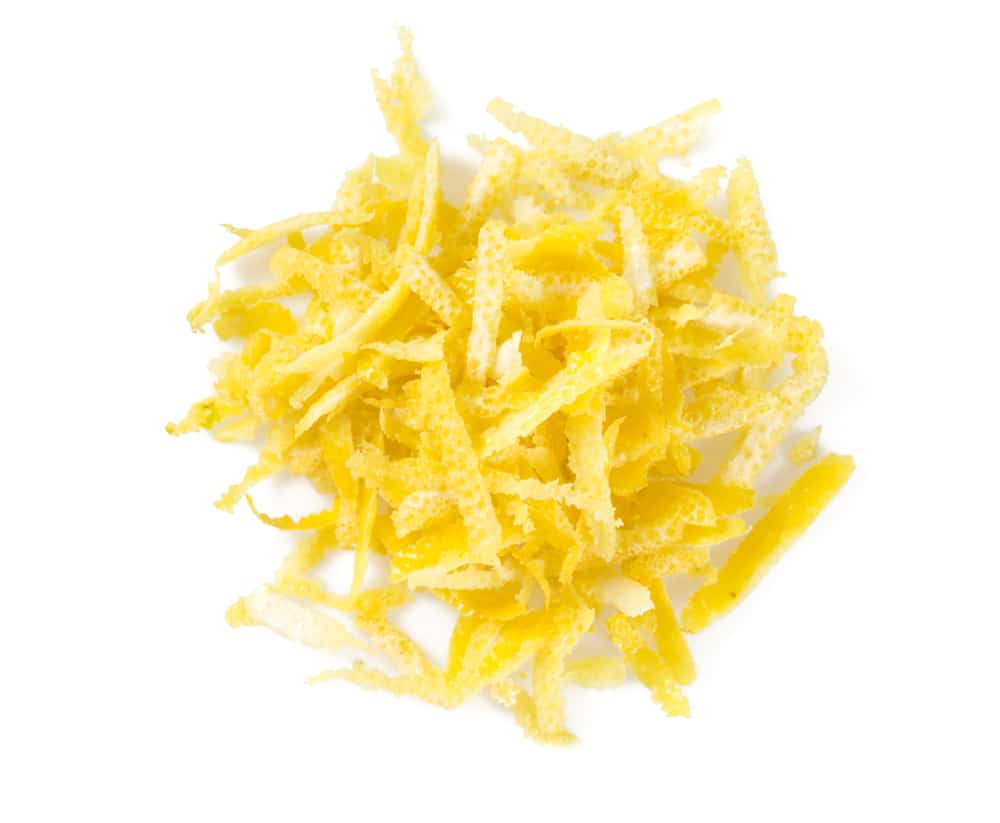
The zest from a citrus fruit acts as a mild substitute for a ginger paste that offers similar bitterness with a hint of sweetness.
The best fruit to use is lemon, followed by oranges and then limes. Only use lime if you have nothing else available. Regardless of what fruit you use, you’ll only need a tablespoon or two for a large recipe.
Aim for about half the amount of zest as you would use for ginger paste so the flavor profile of the dish doesn’t change too much.
To be clear, the juice from citrus is not a good substitute for ginger paste and will throw off the flavor, completely leaning on the sour side instead of the bitter side. The zest on the outside of the fruit is what you should use as a replacement.
Keep in mind that the texture of the rind is best in baked or cooked dishes that will lessen the grainy texture. The zest will also work best in recipes that use the ginger paste to slightly sweeten the dish.
People often add some white sugar to their ginger paste when they’re making a sweet recipe. Recipes like ginger cakes, sweet curries, and ginger martinis can work with the zest of citrus fruit.
The reason citrus zest made the top five substitutes is because it is easily accessible, and many people keep lemons, oranges, or limes in their kitchen.
The flavor of the zest definitely lacks some of the pungent bitterness you expect from a ginger-forward dish, but the brightness of the citrus helps to add some flavor.
2. Ginger Candies
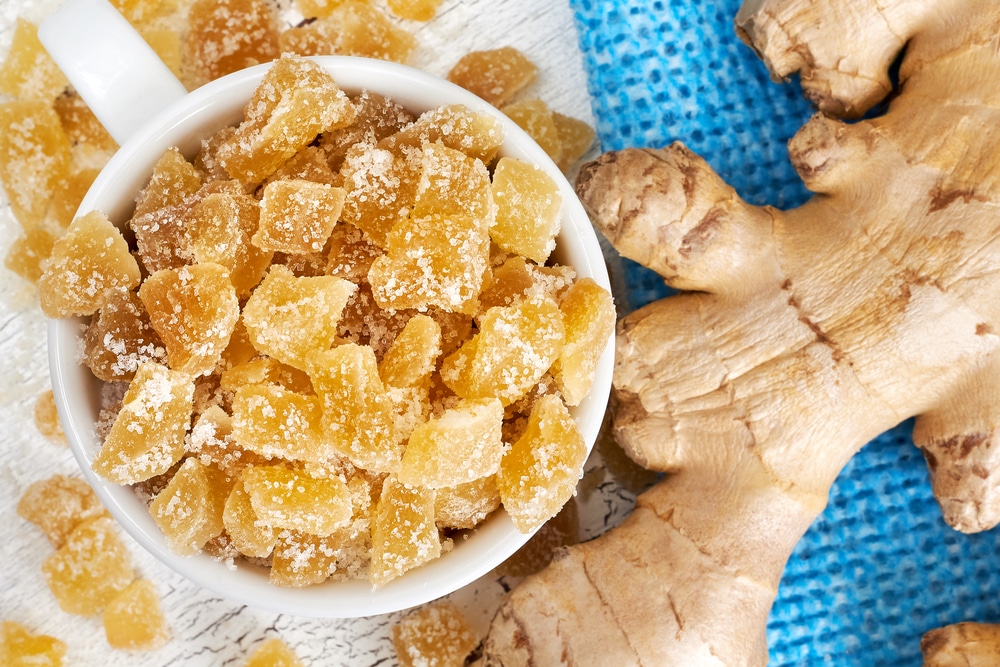
Ginger candies are a popular treat around the world. Many people enjoy the combination of sweetness and bitterness that sugared ginger has.
If you have a bag of candied ginger in your cupboard, you can mash them down and chop them up to achieve a similar taste and texture to ginger paste.
Once again, this substitute works best in recipes that already use ginger to enhance the sweetness of a dish. Candied ginger is the ideal substitute when making a ginger-forward cocktail or a ginger dessert.
If you plan to make a gingerbread house, this is one of your best bets, along with the next substitute discussed on this list.
To get the candied ginger as close to ginger paste as possible, chop it up finely and gently heat it in the microwave or on the stove. Once it is warm, smash or grind up.
The best way to grind it is with a mortar and pestle. It should resemble a gooey ginger paste at this point. Blending the crystallized ginger can also work, but it can be a very messy practice.
Ginger candies are an excellent substitute in a ginger soup or even to marinate ginger chicken, but prepared for a higher level of sweetness than plain ginger paste offers.
If you’re a fan of ginger and use it often, pick up a bag of candied ginger to keep on hand, and you might fall in love with the sweet snack.
3. Allspice
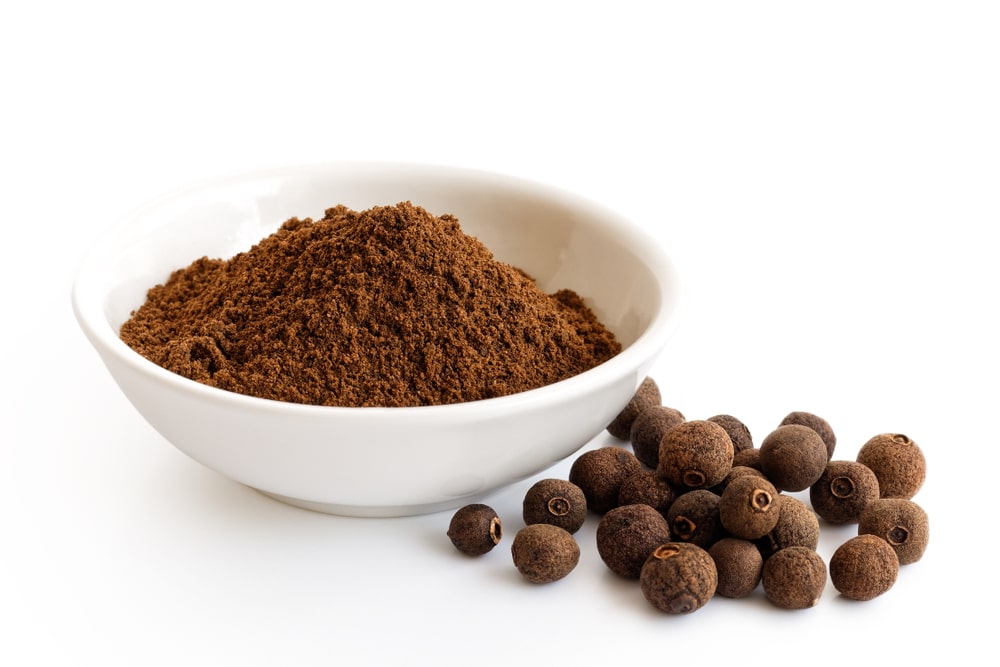
This spice is the ultimate ginger paste substitute for desserts, especially gingerbread, one of the most popular ginger desserts.
Allspice is the best spice to use because of its sharp and distinct taste that steps in well for the strong flavor ginger brings to a dish.
However, cinnamon, nutmeg, coriander, mace, or cloves, also offer a similar bitter flavor. These spices are a convenient substitute because most people have one, more, or all of them in their kitchen.
You don’t need to use too much of any of these spices to achieve the right flavor, usually just a teaspoon or two whenever you would have added the ginger paste. These spices work as a ginger paste substitute for most ginger recipes, whether sweet or savory.
Ginger salads, stir-frys, teas, chicken, and cookies are just a few of the recipes that readily take allspice as a substitute for ginger garlic paste. You can also add a dash of garlic powder if the dish should be garlic-forward.
Since you only use a small amount of spice as a substitute, it won’t dry out the recipe’s texture very much. But if you feel like the food is incomplete without the moisture from the paste, you can add some oil or water.
4. Lemongrass
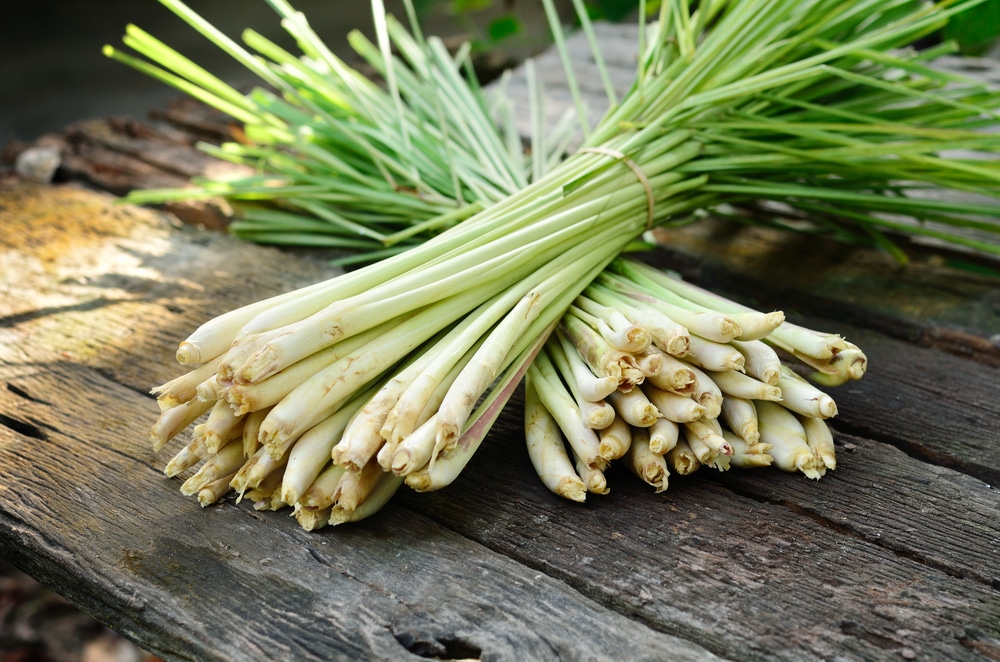
Lemongrass is not the best ginger paste substitute of them all, but it can work in a pinch, especially if it’s an Asian recipe. If you need a substitute for a sweet dessert, consider lemongrass as a no-go, as it will taint the dish’s flavor.
The taste of lemongrass is a subtle citrus and lemon flavor with a hint of mint. Lemongrass is an effective substitute for ginger paste when making tea or Asian dishes like curry, party dip, soup, or stir-fry.
Lemongrass is a vegetable and will likely appear obvious in your dish, whereas a paste dissolves and melds with the other liquids. Keep this in mind because you may get stronger bites of a lemongrass flavor and then bites without the lemongrass present.
Some people boil lemongrass in a simple syrup. To do this, you fill a saucepot with equal parts water and sugar and drop a generous handful of lemongrass into the pot.
You can also add a small pinch of salt to enhance the flavor and dull down the sweetness. The result will be a sort of lemongrass syrup, which is easier to use in cocktails or teas.
Struggling to find lemongrass in the grocery store? Check the produce section.
5. Galangal
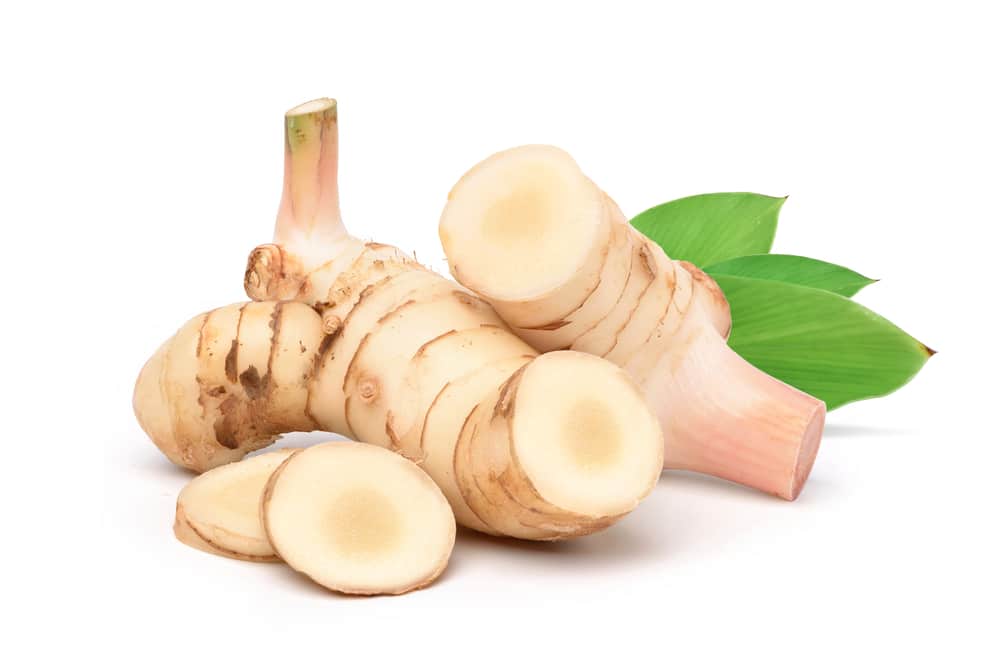
While galangal paste is one of the closest substitutes to ginger paste, it’s likely the hardest to come by. Both ginger and galangal are part of the Rhizomes family of plants. Galangal is also called Thai ginger or Siamese ginger because the two ingredients are so similar.
Galangal paste works best in Indonesian or Thai recipes such as Tom Kha Gai, Gai Pad King, Pad Thai, Indonesian Tea, Jammu, Soba Noodle Soup, and more. If you have galangal, it can easily be made into a paste.
To make galangal paste, peel the outer part of the root and then chop it up as finely as you can. Using a blender or food processor, blend the pieces of galangal into a paste. Adding a splash of water or olive oil will help create the right texture.
Although nearly identical in texture, the flavor of galangal is closer to a sharp citrusy taste with a hint of pine. So keep in mind you won’t get the bitter punch of flavor that a ginger garlic paste delivers.
Frequently Asked Questions
Check out these frequently asked questions about ginger paste and garlic paste to further your knowledge of this staple ingredient.
Is ginger paste the same as fresh ginger?
Yes, ginger paste and fresh ginger are essentially the same things. To make a ginger paste, ginger root is ground up and mixed with a small amount of oil to add some moisture and make a paste consistency.
Is crushed garlic the same as garlic paste?
Yes, a clove of garlic that’s been roasted and smashed is basically now garlic paste. The moisture and heat soften the garlic. The heat makes it easier to transform it into a paste form.
Can we use garlic ginger powder instead of paste?
This can work quite well as a ginger garlic paste substitute. The flavor should be dead-on, but the consistency may be slightly off. The powder may dry out the dish or drink because there is no moisture like there is in the paste.
In a dish like a curry or a dip, this may not be detrimental, especially if you had a splash of oil. However, if the paste was meant for a cocktail or baked good, the powder may throw off the consistency too much, ruining the texture completely.

